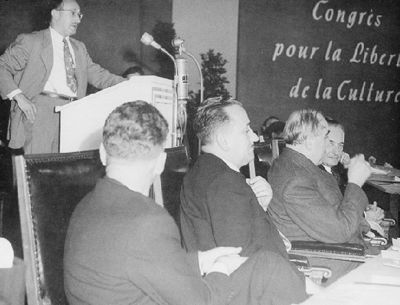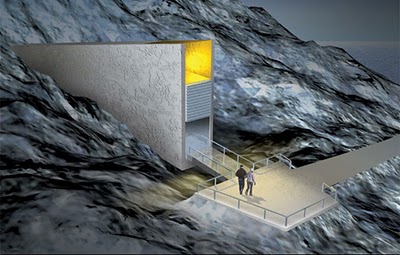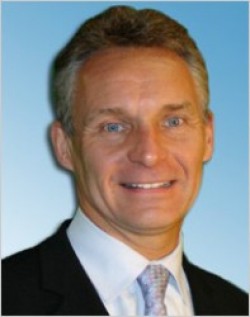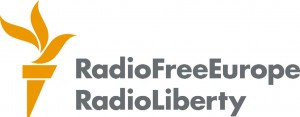Alex Constantine - October 19, 2010
(Google translation with light editing) http://www.voltairenet.org/article167129.html
By Federico Roberti | VoltaireNet | October 3, 2010
 Sydney Hook opened the Congress for Cultural Freedom
Sydney Hook opened the Congress for Cultural Freedom
As a continuation of an article on funding for European intellectuals during the Cold War, published in this site in 2003, Federico Roberti addresses the specific case of Italian intellectuals. Far from being superfluous, this brief history shows that things have not changed and that the authors of fashion are often nothing more than mercenaries of the pen.
During the Cold War, the U.S. government devoted significant resources to a secret program of cultural propaganda aimed at Western Europe. The CIA program was applied with extreme discretion. The fundamental act of that program was the creation of the Congress for Cultural Freedom, organized by agent Michael Josselson between 1950 and 1967 [ 1 ].
At its peak, the Congress had offices in 35 countries (some of them out of Europe) and paid the salaries of tens of intellectuals.
It also published a score of prestigious journals, organized art exhibitions, international conferences and rewarded high-level musicians and sundry other artists with various awards and recognitions. It's mission was to move European intellectuals away from Marxism, lead them to adopt positions consistent with the American way of life, thus promoting the strategic interests of U.S. foreign policy.
The books of some European writers came to the publishing market in the framework of an explicitly anti-communist. These books were, in the case of Italy, (bread and wine) by Ignacio Silone, who did so, the U.S. arm of government, his first public appearance. The truth is that during his exile in Switzerland, Silone had been in contact with Allen Dulles, then a chief of the U.S. secret services in Europe and later, after World War II, the inspirer of Radio Free Europe, also created by the CIA under the cover of the National Committee for a Free Europe.
In October 1944, Serafino Romualdi, agent of the OSS, was sent to the French-Swiss border with the mission to smuggle Silone out of Italy. Silone, with Spinelli and Guido Altiero Piovene, represented Italy at the founding conference of the Congress for Cultural Freedom held in Berlin in 1950. Michael Josselson had managed to get to that conference a $50,000 funding from the Marshall Plan funds. Invited to that conference, the famous French intellectual Jean-Paul Sartre and Albert Camus publicly denounced it and refused to participate.
At first we find among the honorary presidents of the Congress for Cultural Freedom, along with Bertrand Russell and the Italian Benedetto Croce, all philosophers, followers of an emerging Euro-Atlantic thinking. At age 80, Benedetto Croce was revered in Italy as a noble father of anti-fascism, and openly defying Mussolini. At the time of landing in Sicily, he was certainly a useful contact for William Donovan, then primarily responsible for U.S. intelligence.
The Italian section of the Congress for Cultural Freedom, called the Italian Association for Cultural Freedom, was created by Ignacio Silone in late 1951, and became the launch site, mainly in logistical and financial level, of a federation of over 100 cultural groups, such as Unione goliardico (Student Union) in universities, the European Federalist Movement Altiero Spinelli, the Centers for Democratic Action, the movement communitas Adriano Olivetti and more.
The Italian section of the Congress published the magazine Tempo Presente, published by Silone and Nicola Chiaromonte, and other less known as Il Mondo, Il Ponte, Il Mulino and, later, Nuovi Argomenti. Together with lay and Adriano Olivetti and Mario Pannunzio, the leading group included Ferruccio Parri, the father of the independent left. In less visible positions had political origins and shareholder liberal Democrat, as Ugo La Malfa.
A congressional office was in Rome at the palace Pecci-Blunt, where Mimi, the hostess, organizing one of the most closed and crowded halls of the capital. Nearby, at the historic Palace Caetano, which would become infamous for its place in the kidnapping of Aldo Moro, moved another queen of the salons linked to the U.S. sponsors of the Congress, Marguerite Chapin Caetano.
The latter, with her darkened Botteghe magazine, was the promoter of a few names in Italian literature and poetry of 20 century. His son, by chance, was Sir Hubert Howard, a former officer of the Allied secret services, specializing in psychological warfare, a close friend of the nephew of President Roosevelt, Kermit Roosevelt himself, first in the heart of the OSS and later recruited by the CIA, was one of the most ardent supporters of psychological warfare.
One of the closest collaborators of Caetani was Elena Croce, daughter of the philosopher Benedetto Croce. Elena's husband, Raimondo Craveri, agent of the secret services of the partisans, recruited by the U.S. embassy after liberation and was the politically reliable.
Meanwhile, Ellen was engaged to select men in the world of culture with worthwhile conversation.
Guests at the home of Elena Craveri Raimondo Croce had the opportunity to establish contacts more cosmopolitan than you can imagine. There could be met Henry Kissinger or the future president of Fiat, Gianni Agnelli. Prominent among them was finance mogul and founder of Italian secular Mediabanca, Don Raffaele Mattioli. Both Americans were confident in the commandatore Mattioli in 1944, even before the end of the war, had already discussed with him the future reconstruction programs. In addition to funding plenty of culture, Don Raffaele Mattioli attention was as discreet as very little selfless PCI, with whom he had established during the Ventennio networks [ 2 ].
It followed that in Italy the rise of the P2 Lodge and the Gladio [ 3 ], there was also a very tough anti, but enlightened, progressive and even left. The network of the Congress for Cultural Freedom was the public face, presentable.
Resources for the Euro-Atlantic cultural propaganda was obtained from a truly great. At the beginning of the Marshall Plan each of the countries receiving funds had to make a contribution by depositing in its own central bank a sum equivalent to the U.S. contribution. A bilateral agreement between that country and the United States later allowed that 5% of that amount will become owned.
Precisely that part of the "matching funds" (about $ 10 million a year from a total of 200 million) was what was available to allow the CIA to realize their special projects.
About 200 000 dollars of those funds, which had been instrumental in the Italian elections of 1948, was allocated to fund administrative costs of the Congress for Cultural Freedom in 1951. For example, the Italian subsidiary received $ 1 000 per month to be deposited in the account Codignola Tristano, the leader of the publishing house La Nuova Italia.
In 17 years, the CIA pumped to the Congress for Cultural Freedom and projects linked to it at least $ 10 million.
A feature of the cultural propaganda strategy was the systematic organization of a network of private groups, "friends" in an unofficial consortium. It was a coalition of philanthropic foundations, corporations and individuals who worked closely with the CIA giving the latter a facade and channels of funding to develop its secret programs across Europe. To maintain their status as private institutions, venture capital contributed to the Cold War, something like what they are doing time for some NGOs that enjoy the support of the West through almost all regions of the world.
The inspirer of that consortium was Allen Dulles, who since May of 1949 had directed precisely the formation of the National Committee for a Free Europe, an initiative from only apparently, a private group of prominent Americans, but it was really one of the most ambitious projects of the CIA. "The State Department is happy to assist in the formation of this group," said Secretary of State Dean Acheson. The purpose of this public blessing was to hide the true origins of the Committee and its absolute control by the CIA, which financed it by 90%. Ironically, the founding charter a clause explicitly excluding its activities for the specific purpose for which it was created: to make propaganda.
Dulles was very aware that the Committee's success would depend on its ability to "appear independent of government and representative of the spontaneous convictions of citizens who love freedom."
The National Committee could boast of having a set of particularly well-known members, businessmen and lawyers, diplomats and administrators of the Marshall Plan, media moguls and movie directors: from Henry Ford III, the president of General Motors, even Mrs. Culp Hobby, director of MOMA, CD Jackson, a member of the management of Time-Life, John Hughes, Ambassador to NATO, Cecil B. De Mille to Dwight Eisenhower.
They were all "people aware", ie. belonging to the club in a conscious way.
From the first year of its inception, the Committee had more than 400 members and its balance sheet amounted to almost $ 2 million. Un balance aparte, de 10 millones, estaba dedicado a Radio Free Europe, que en pocos años contaría con 29 estaciones de radio y transmitiría en 16 idiomas, participando también en la transmisión de órdenes a la red de informantes del otro lado de la Cortina de Hierro. A separate balance of 10 million, was dedicated to Radio Free Europe, which in a few years would have 29 radio stations and transmitted in 16 languages, also participating in the transmission of orders to the network of informers across the Curtain iron.
The name of the department responsible for collecting funds for the National Committee was the Crusade for Freedom and its spokesman was a young actor named Ronald Reagan ... [ 4 ].
The use of philanthropic foundations proved to be the most effective means of conveying large amounts of money for the projects of the CIA but the source alarmed recipients. In 1976 a commission created to investigate the activities of the U.S. Secret Service reported the following data on the penetration of the CIA in foundations....
Even more significant is the fact that during the same period and with regard to international activities, almost half the sums lavished on those foundations were CIA funding. It was thought that the prestigious foundations like Ford [ 5 ], Rockefeller and Carnegie ensured "the best and most credible form of covert financing." This technique was particularly appropriate for organizations that had a Democratic administration, as these had to be able to reassure those of its own members and supporters who were unaware of the reality, but hostile critics as to the possibility, of private financing, as highlighted in 1966 in an internal study of the CIA.
Furthermore, within the Ford Foundation was established an administrative unit specifically designed to handle relations with the CIA unit that had to be consulted whenever the agency wanted to use the Foundation as a hedge for funding in any operation. That unit consisted of two officials and the president of the Ford Foundation, John McCloy, who by then had been defense secretary and president, in turn, the World Bank and Chase Manhattan Bank, owned by the Rockefeller family and of the Council on Foreign Relations [ 6 ] and trusted lawyer of the Seven Sisters [ 7 ]. The impressive resume does not need comment.
One of the early leaders of the CIA to provide support to the Congress for Cultural Freedom was Frank Lindsay, a veteran of the OSS, who by 1977 had written one of the first internal reports recommending the creation of a U.S. force Cold War secret agency. During the years between 1949 and 1951 as deputy director of the Office of Policy Coordination (OPC), special department created within the CIA to deal with covert operations, Lidnsay became responsible for training groups in Italy under the name of Gladio [ 8 ]. In 1953, Lindsay went to the Ford Foundation, while retaining its close ties with his former colleagues in the intelligence services.
En 1953, De Mille agreed to become special adviser to the U.S. government on film in the Motion Picture Service (MPS), the renowned filmmaker presented at the office CD Douglas [Jackson?], who later wrote: "It is completely on our side and (...) is very aware of the power that films Americans are abroad. There is a theory, which I fully share, that the most effective use of American films do not get to complete a film project that addresses a specific problem but rather with the introduction in a work "normal" fragment appropriate dialogue, a witty response, an inflection of voice, eye movement. He told me that every time I put into his hands a simple matter for a country or region, he will find ways to treat it and put it into a film. "
The Motion Picture Service, awash in government funding to the extent that it becomes a real film production company, had working directors and producers who were examined in advance and were assigned to work on films that promoted U.S. objectives and should reach an audience that had to be influenced by film. MPS advised the secret agencies on the most appropriate films for distribution in the international market.
It also took care of American involvement in the various festivals that were developed overseas and worked zealously to exclude U.S. producers and films that did not support the country's foreign policy.
The main group lobbying for the idea of a Europe closely allied to the United States was the European Movement, which served as leadership of numerous organizations and served as a front for a series of activities aimed at the political, military and cultural.
Under the leadership of Winston Churchill in Britain, Paul-Henri Spaak in France and Altiero Spinelli in Italy, the movement was under close surveillance by the CIA through a front designated as the American Committee on United Europe [ 9 ].
The cultural arm of the European Movement was the European Culture Centre, led by writer Denis de Rougemont. It established an extensive program of scholarships for students and young associations such as the European Youth Campaign, spearheaded propaganda designed to neutralize leftist political movements. As for the liberal internationalists who dared to advocate for a united Europe on its own principles and not according to U.S. strategic interests, they were not treated better than the neutrals, or as bearers of a heresy that had to be destroyed.
In 1962, the reputation of the Congress for Cultural Freedom led to something that had nothing to do with its objectives. In the BBC television program "That Was The Week That Was', the Congress was the subject of an accurate and brilliant parody of Kenneth Tynan. It began with the following introduction: "It is time we hear news of the Cold War culture." He then showed a map depicting the Soviet cultural bloc, which indicated a small circle in strategic cultural position: bases theatrical film production centers, dance companies for the production of missiles "ballet" intercontinental, publishers firing huge volleys of classics to millions of people subjected to the reading, all of which allowed the observation of massive indoctrination in full swing. Then came the final question: Do we, here in the West, have an effective capacity of response?
The answer was yes, we have the kind Congress for Cultural Freedom, which is maintained by American money and has installed a certain number of bases in Europe and the world that act as beachheads for release cultural retaliation. Bases masked by code names such as Encounter, the best known of the journals sponsored by Congress, short, as presenter of Encouterforce Strategy. Then entered the scene a spokesman for the Congress with a package of magazines as he said represented "a kind of cultural NATO whose aim was the cultural jamming, or creating a retaining wall can trap the cells.
The historical mission was to achieve world leadership of the readers, no matter what happens, the spokesman claimed before pointing out: "We in Congress feel it is our duty to keep our bases in a state of red alert 24 hours a day. " Acute and impeccably documented, satire was the cause of sleepless nights for Michael Josselson, the organizer of the Congress.
A matter of some concern arose in the summer of 1964. During a parliamentary inquiry, led by Wright Patman, on the tax exemptions granted to private foundations discovered an information leak that identified 8 of these as fronts for the CIA.
Those foundations were only mailboxes that did not represent anything other than a mere letter, and had been created by the CIA to get money to them, apparently legal.
When it was money, the foundation made a donation to another foundation widely known because of their legitimate activities. These latter contributions were duly registered under the tax rules in force for the nonprofit sector through designated forms 990-A. The operation was done to end the supply of money to the organization that the CIA had designated as the final recipient.
Some journalists particularly curious, as the weekly The Nation, managed to gather some pieces of the puzzle asking if it was legal for the CIA to channel funds through these indirect methods, different congresses and conferences devoted to "cultural freedom" or that any body major press, supported by the CIA, offered large rewards for Eastern European dissident writers.
The surprising thing (really surprising?) was that not a single journalist investigated further. The CIA conducted a serious review of its financing techniques, but not believed to reconsider the use of private foundations as vehicles to finance covert operations. Instead, according to the CIA, the real lesson of the scandal caused by the Patman committee was that the foundations provided coverage to the distribution of funding should be used more extensively and professionally, primarily by providing funds for projects implemented even the U.S. territory itself. From that year, Michael Josselson tried to protect her child from the revelations. He even thought to change the name and came to cut economic ties with the CIA completely replaced by funding from the Ford Foundation.
But that only served to delay a final and inevitable. On May 13, 1967 was held in Paris the general assembly of the Congress for Cultural Freedom which essentially marked the end of that organization, although its activities continued to languish until the late 1970s.
What actually happened was in April 1967, Ramparts magazine had published, despite a smear campaign against it, an investigation of CIA covert operations at a time when the agency had managed to find out the magazine was on the trail of the organizations that served as the facade.
Quickly, the national press echoed what had been discovered Ramparts and there was a wave of revelations, which also brought to light the facades [CIA] outside the United States, beginning with the Congress for Cultural Freedom and publications. Even before the allegations of Ramparts, Senator Mansfield had requested a parliamentary investigation into secret CIA funding, a request that President Lyndon Johnson responded by creating a commission of only three members.
In its final report, issued on March 29, 1967, the commission sanctioned Katzenbach any federal agency that would have provided secret aid or funding, directly or indirectly, to any cultural organization, public or private non-profit purposes. The report fixed the December 31, 1967 as the deadline for completion of all operations of secret CIA financing, giving you the opportunity to grant a number of late major powers (in the case of Radio Free Europe, the contribution would help to continue broadcasting for 2 years).
In fact, as appears from an internal circular issued later, in 1976 - the CIA covert action did not prohibit U.S. trade organizations or the clandestine funding of international organizations based abroad. Rather than representing a new conception of the limits on covert activities of the intelligence services, many of the restrictions that were adopted in response to the events of 1967 seem to be more safety measures to prevent future public disclosures that may put endanger the delicate operations of the CIA.
Does it speak again?
NOTES
[ 1 ] " When the CIA financed European Intellectuals ', by Denis Boneau, Réseau Voltaire, 27 November 2003.
[ 2 ] The 20-year fascist regime, NDT.
[ 3 ] " The U.S. networks destabilization and interference ", by Thierry Meyssan," Terrorism is not recognized by NATO ", interview by Daniele Ganser SC, Réseau Voltaire, 20 August 2001, December 29 2006. Rapport sur l'Opération Gladio Andreotti , document dated February 26, 1991.
[ 4 ] " The story of Ronald Reagan and the farce of the "Evil Empire" », Réseau Voltaire, June 7, 2004.
[ 5 ] " The Ford Foundation, a philanthropic facade for the CIA "and" Why the Ford Foundation supports the opposition ", by Paul Labarique, Réseau Voltaire, 5 and April 19, 2004.
[ 6 ] " How the Foreign Relations Council determined American diplomacy ", Réseau Voltaire, June 25, 2004.
[ 7 ] The "Seven Sisters" are the seven western companies that controlled virtually all world oil markets. NdT. NDT.[ 8 ] See note 3.
[ 9 ] " The Secret History of the European Union », Réseau Voltaire, June 28, 2004.






